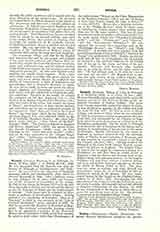
Charles William Russell
Priest, writer and editor, b. at Killough, Co. Down, May 14, 1812; d. at Dublin Feb. 26, 1880

Russell, CHARLES WILLIAM, b. at Killough, Co. Down, May 14, 1812; d. at Dublin February 26, 1880. He was descended from the Russells who held the barony of Killough of Quoniamstown and Ballystrew. He received his early education at Drogheda grammar school and Downpatrick, after which he entered Maynooth in 1826. After a brilliant course he was ordained on June 13, 1835, and became one of the professors of humanities at the college. In 1842 he was chosen by Gregory XVI to be the first Vicar Apostolic of Ceylon, but he refused the dignity as also the Bishopric of Down and the Archbishopric of Armagh. Three years later he returned to Maynooth as professor of ecclesiastical history. Having published his translation of Leibnitz’s “System of Theology” in 1850, he was occupied on his “Life of Cardinal Mezzofanti” which appeared in 1858. In 1857 he succeeded Dr. Renehan as President of Maynooth. His profound antiquarian learning caused him to be appointed a member of the Historical Manuscripts Commission in 1869, and in that capacity he acted as joint editor (with John Prendergast) of the eight-volume “Report on the Carte Manuscripts in the Bodleian Library” (1871) and the “Calendar of Irish State Papers during the reign of James I” (4 vols., 1872-77). He was also a frequent contributor to the “Dublin Review” which for thirty years he enriched by various. papers, often writing more than one for the same number. The last of these were the two masterly articles on the sonnet (1876-77). He wrote many articles for “Chambers’s Encyclopedia“, and two—”Palimpsests” and “Papyrus”—for the “Encyclopedia Britannica”. He contributed also to many other magazines such as the “Edinburgh Review”, the “Month”, and “Irish Monthly”. A humbler but very popular work has been his translation of Canon Schmid’s “Tales for the Young” first published in 1846. Besides his literary work and all that he accomplished for Maynooth, he exercised a very powerful influence on the leading men of his age by the charm and force of his personality. Wiseman and Newman alike counted him as an intimate friend, and the latter wrote of him: “He had perhaps more to do with my conversion than any one else”. Dr. Russell lived to witness the early success of his nephew Charles who subsequently became Lord Chief Justice of England.
EDWIN BURTON

